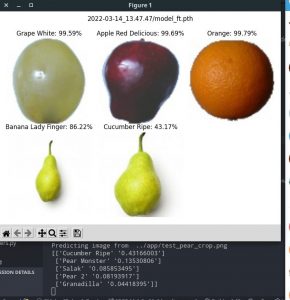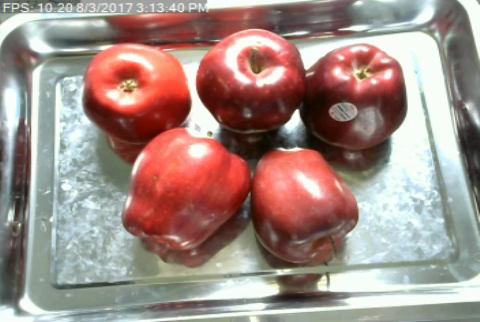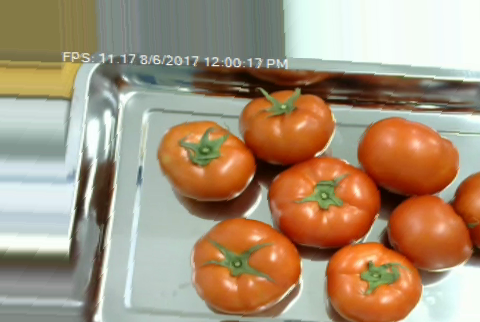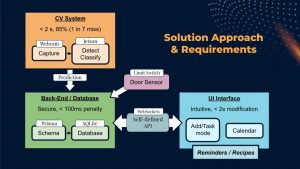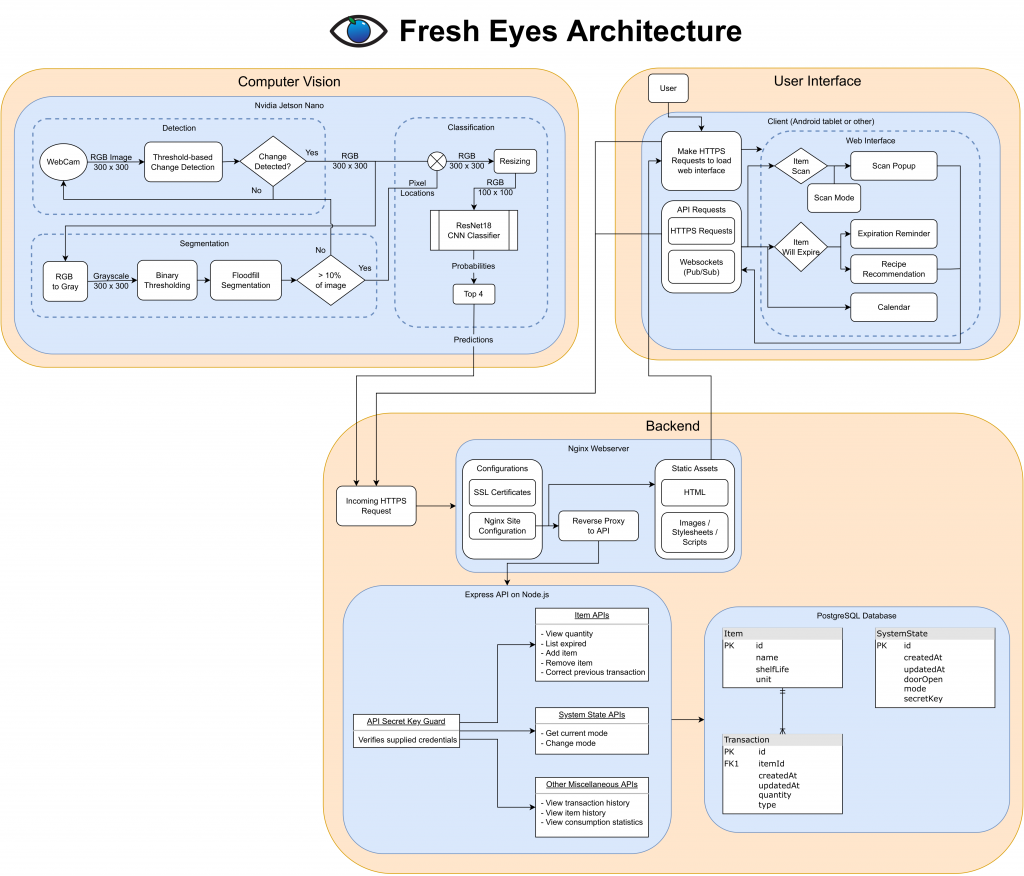During last week’s status report, I mentioned how we needed to find a dataset which exposed the network to a wider variety of fruit.
This week, was a relatively productive one: I managed to train the network on the “silvertray” dataset (https://www.kaggle.com/datasets/chrisfilo/fruit-recognition) which produced relatively robust results on test data that the network had never seen before (a green label indicates accurate detection; here we had 100% accuracy on test data).
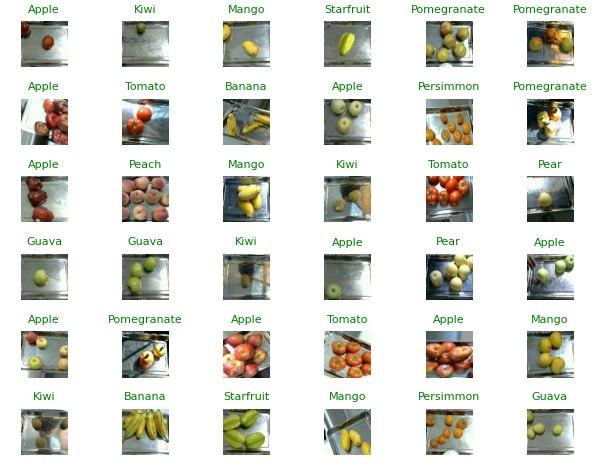
Of course, the test data also involved the same silver trays that the algorithm trained on, so a high accuracy is expected.
I then moved on to making it perform detection using real-world data, on our C++ application with our webcam, and these are results!
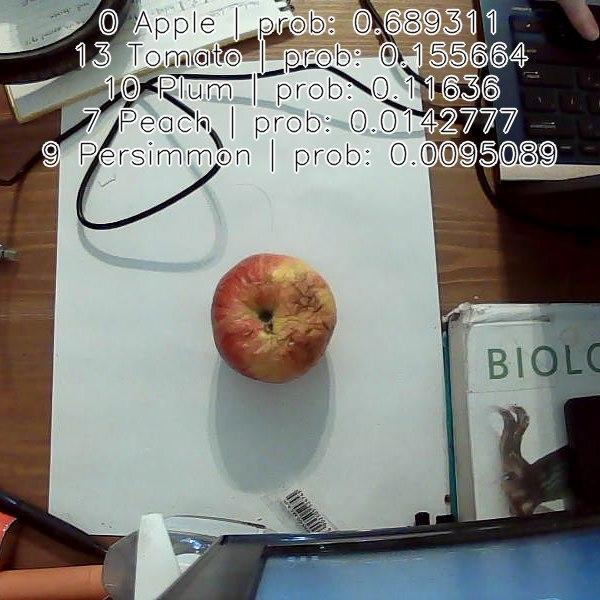
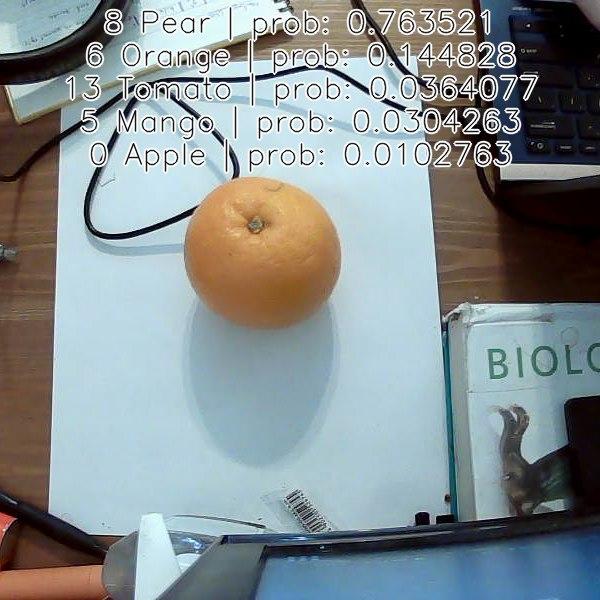
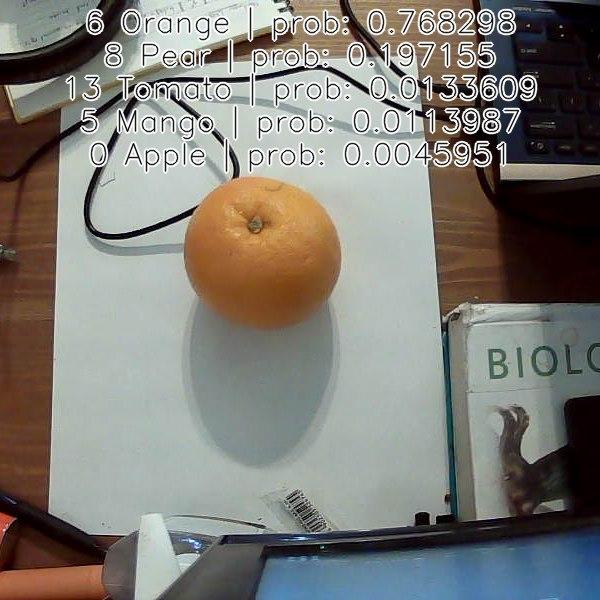
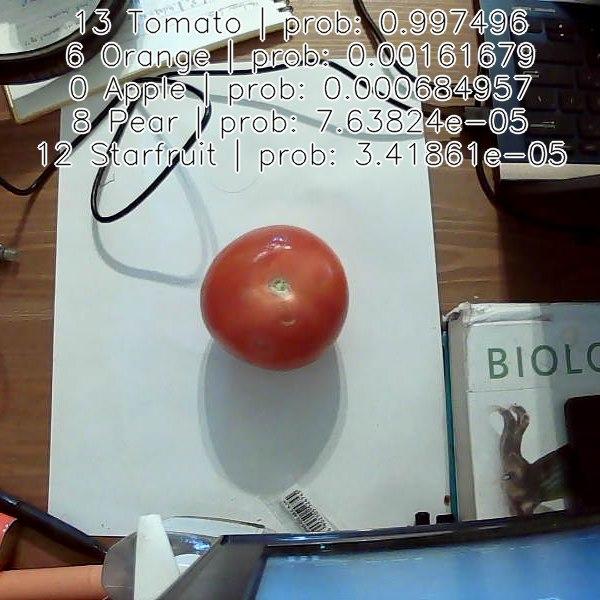
As visible in the images above, the NN is able to detect the fruits accurately on in a real-world situation (including a noisy non-white background WITHOUT segmentation applied). That being said, there are some inaccuracies/misdetections such as with the orange above despite the frames being very similar. I describe needed improvements later below.
With this, we are currently on track towards a working prototype, although we could probably train the network to handle more classes with self-collected or web-procured data.
Next week, we will begin integration of the various components together, and I will work on several improvements to the current CV algorithm/setup:
- Include a “change detection” algorithm that will detect when significant changes appear; this will allow us to tell if a fruit is needing to be scanned.
- Normalization of the image before processing; this will help reduce issues with random lighting changes, but might require that the network be retrained
- Build the actual rig with a white background and test the algorithm on that
- If necessary, change to using a silver tray or silver-colored background similar to the network’s training set, and/or collect our own datasets.
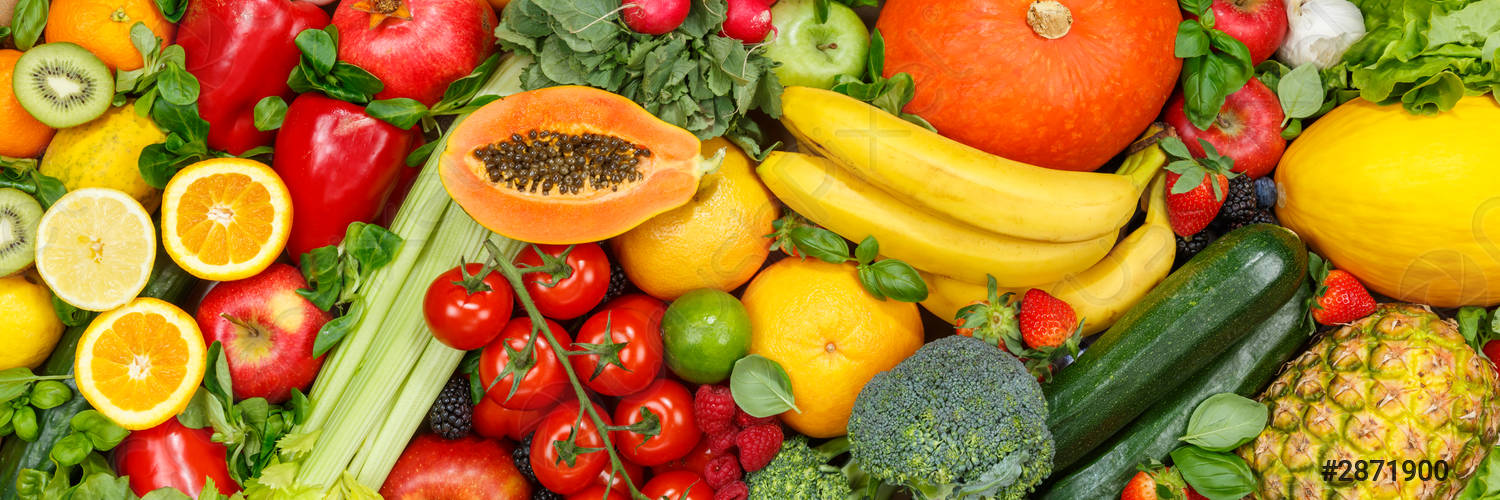

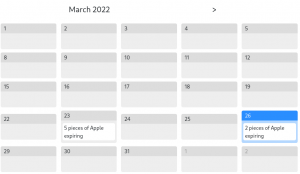 I also continued work on the back-end API, adding logic for when items are replaced to the fridge. This ensures that the item count and expiry dates remain correct, even when the same item is removed and placed back into the fridge.
I also continued work on the back-end API, adding logic for when items are replaced to the fridge. This ensures that the item count and expiry dates remain correct, even when the same item is removed and placed back into the fridge.